GO TO MARRAKECH PAGES
GO TO CHEFCHAUOEN PAGES
GO TO CASABLANCA PAGES
Go to Eitan and Doreen's Home Page
When the weather cooled and was below 40 °C, I took the train to Rabat, because Margalit the mother of our daughter-in-law Limor came from there. Surprisingly, all trains were consistently on time.
Even though I had a first class
train
ticket, the journey there was quite unpleasant because of a bored
little girl.
And when the alarm went off in our carriage; no-one came to check. I
switched
off my hearing aids, stuffed tissues in my ears, put my fingers in my
ears but
still the noise was unbearable. The other 5 people in the compartment
didn’t
stir from their sleep. I went to the other first class carriage where
it was
quiet but when I saw no-one there, I thought they might uncouple that
carriage
at the
next stop and returned to my seat. Thankfully by this time the alarm
had been
switched off.
Mustapha my guide was waiting
for me at the
top of lots of stairs. He hailed a taxi and we drove off, passing the
Parliament – not the most impressive building in the capital Rabat -
and a
beautiful post office. Later on we even passed a kiosk selling stamps!
We got
off when we could
glimpse the
Atlantic sea; Morocco is the only country that borders both the
Atlantic Ocean and the Mediterranean Sea. We entered Kasbah Oudaia.
Morocco is
the country of beautiful gates; admiring the Almohad gate built in
1196, we entered
the Kasbah through a more modest opening in the wall.
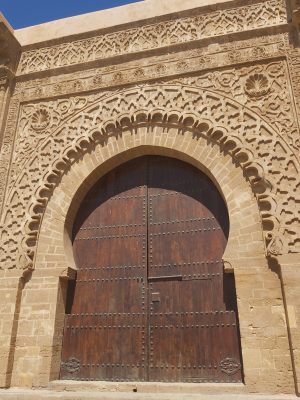
We stopped by a bakery that
looked exactly
like a taboon making pita bread back home. Mustapha impressed me by
buying a
little round pita-like bread, but it had no pocket. He proceeded to
give me a
piece and to others he met on the way.
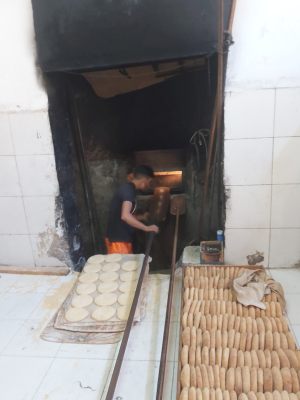
The
Kasbah, also built in the 12th
Century, unlike the bustling Kasbahs in other cities, had whitewashed
houses with
occasional blue trimmings and intricate doors on either side of very
clean
streets. It was so calm and peaceful and very beautiful. No wonder it
is a
UNESCO heritage site. Even though there were shops lining the streets
there was
no pressure to buy.
In the Kasbah I saw a
sign on a mosque wall
forbidding non-Moslems to enter. It was surprising as Moroccans pride
themselves on their religious tolerance. It seems that it is not
forbidden in
the Quran (and I’ve been inside many mosques in Israel). My guide in
Rabat Mustapha told
me that
under the French Protectorate there had been an incident where drunken
foreigners entered the mosque. After that there was a blanket
prohibition on
non-Moslems entering an active mosque. The only exception in Morocco is
the
Hasan II mosque in Casablanca, when guided tours are held between times
of prayer but never on a Friday. It is
quite okay
and even encouraged to visit non-active mosques that are heritage
sites..
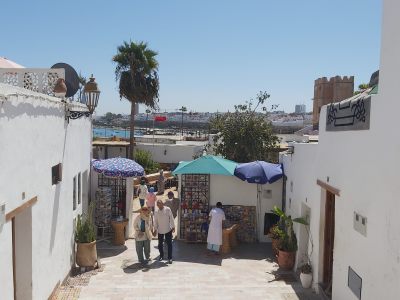
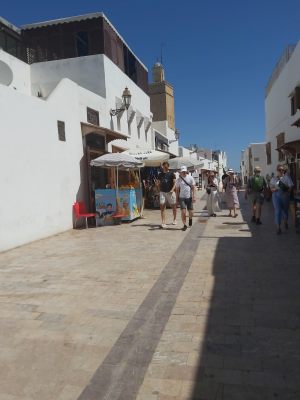
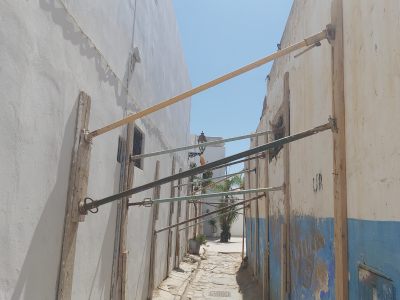
We reached the overlook where the Bou Regreg River originating in the Atlas Mountains reaches the Atlantic Ocean, separating Rabat from the town of Sallee on the other side of the river.
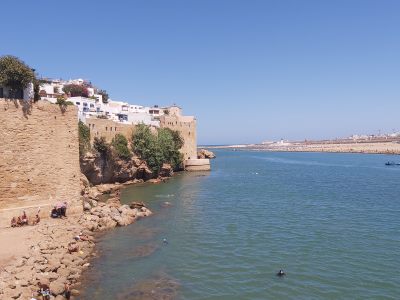
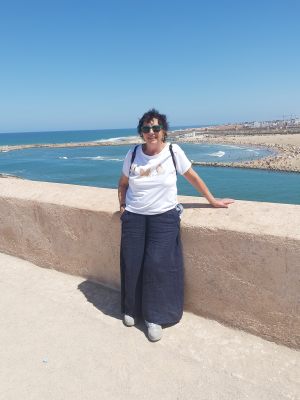
I learnt that Salle was home to
Barbary
pirates, who among other things captured (white) people from England,
Ireland
and as far away as Iceland to sell them to Arab slave traders in North
Africa.
Miguel de Cervantes, author of Don Quixote was a captive in Algiers
between
1575 and 1580 when he was ransomed. In Daniel Defoe’s novel Robinson
Crusoe,
when his ship was captured he was taken as a prisoner to Sallee, the
only
Briton among his Moorish master’s slaves. Many years later, after a
number of wars, combined forces of
America,
Sweden and Sicily and later Britain and the Dutch put an end to piracy.
Salle was later the site of
Operation Torch
during World War II. It was an Anglo-American invasion of Vichy
controlled
Morocco and Algeria, the first major amphibious assault during the war.
Walking down more picturesque
streets we
left the Kasbah and entered the Mellah, also surrounded by a wall and
containing the old Jewish Quarter. Unlike the Kasbah, it was full of
atmosphere, the streets bustling with shops, vendors and thronged by
shoppers. Although
very busy it was also clean and shaded.
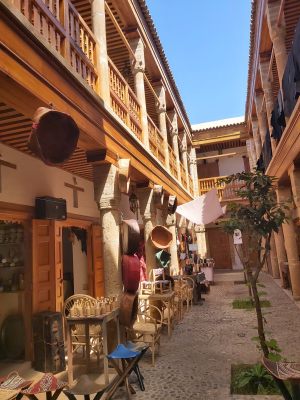
Mustapha took me to a Foundok
(pundak?),
which had been Jewish owned.
It still retained its character with an
inn
upstairs and storage rooms and shops below.
It was very reminiscent of
the Khan
al Umdan in Akko.
The shops displayed carpets and
blankets
from wool and cotton; there was a myriad of cloth merchants and lots of
shops
offering furnishings and curtains. There were also holes in the wall
where curtains
were being sewn and wood turners making intricate designs
for
furniture for
traditional Moroccan houses; and of course shops offering Argan oil. What I found particularly
interesting was a
shop that made oil from all kinds of nuts including coconut, walnut,
almond,
sesame and some other unidentifiable seeds.
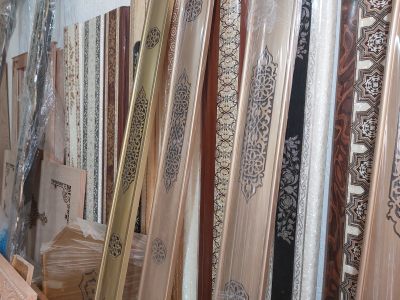
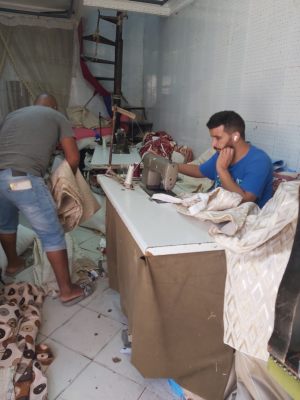
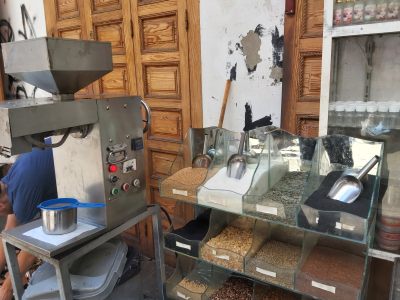
But the most fascinating hole in the wall had two men sitting opposite each other. The one man sitting on the floor with his back to the street held two large spools of red thread in his hands, continuously and smoothly changing the spools from hand to hand. On the other side a man sitting on a stool holding a length of material, with a tiny needle was joining the threads to the material, making an intricate pattern.
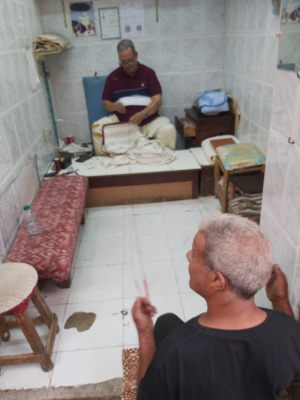
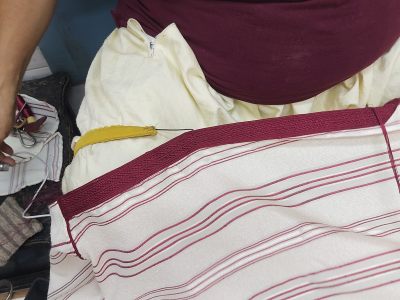
We met an old Berber woman
(recognizable by
her tattoos) who as a young girl worked in the house of Jewish people
in the Mellah
She only had praise for the way they treated her.
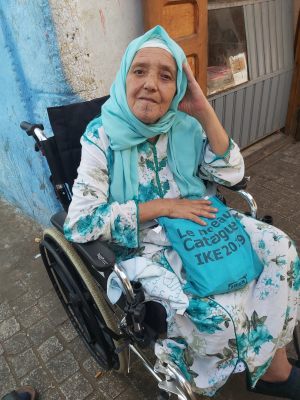
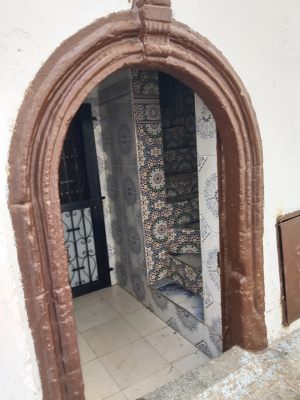
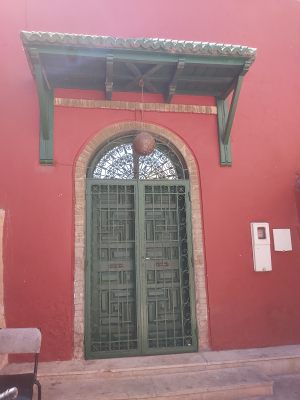
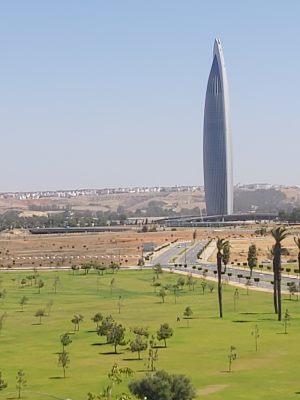
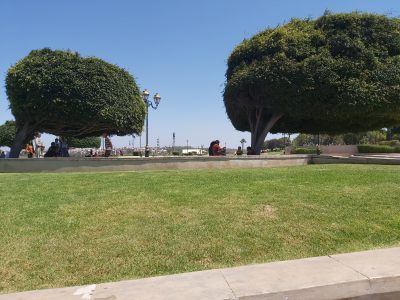
We reached the Mausoleum of
Mohammed V
which contains the impressive tombs of Mohammed V, and his two sons,
the late
king Hassan II and Prince Abdullah. The kings of Morocco
hail from
the
Allawite dynasty. (The Allawites are the major religious group in Syria)
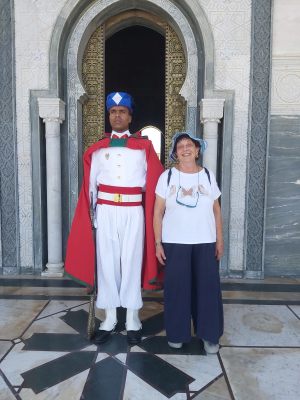
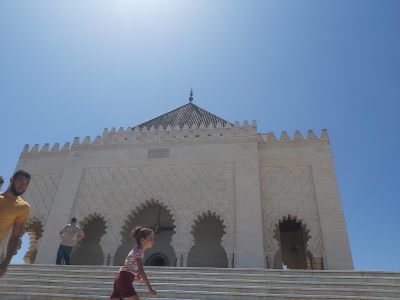
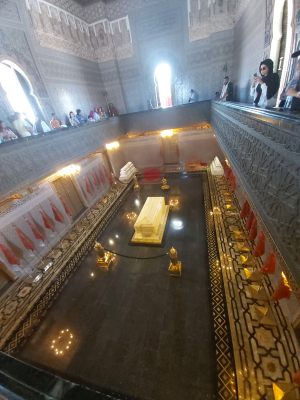
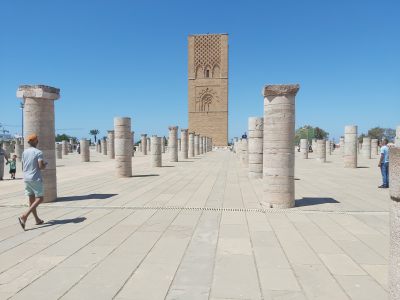
Exiting the mausoleum we walked
across a
huge space, meant to be the largest mosque
in the world built in the 12th
Century. When Caliph al-Mansur died building was stopped.
Hundreds of
columns with
the unfinished Hassan tower or minaret still remain standing
Lunch time: Mustapha wisely
hailed us a
taxi and we went down to the Bou Regreg River to the Marina Palms
restaurant. An excellent choice. While we waited for our delicious
seafood to be prepared I
watched
with interest as boys jumped off the high pier into the river below;
rowboats
transferred people between the shores of Rabat and Sallee, while
tourists
chugged along in motorized boats.
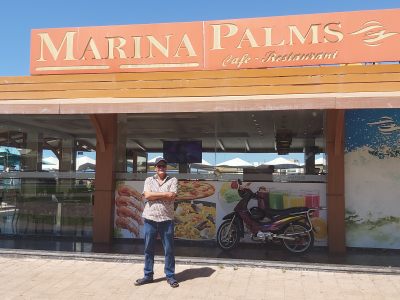
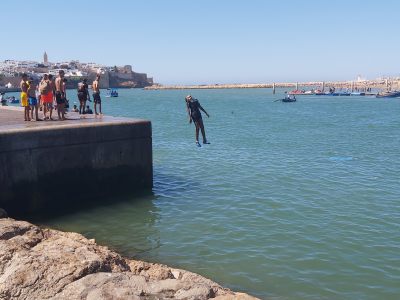
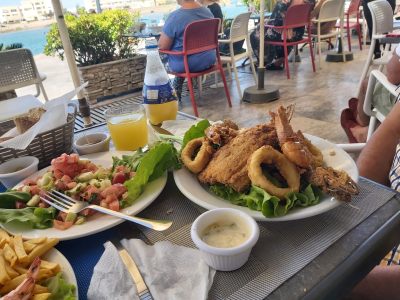
Lunch time: Mustapha wisely
hailed us a
taxi and we went down to the Bou Regreg River to the Marina Palms
restaurant. A
wise choice. While we waited for our delicious seafood to be prepared I
watched
with interest as boys jumped off the high pier into the river below;
rowboats
transferred people between the shores of Rabat and Sallee, while
tourists
chugged along in motorized boats.
It was a delightful day and I
could relax
my sore feet on the 3 ½ hour train ride back to Marrakech.
Go to Eitan and Doreen's Home Page